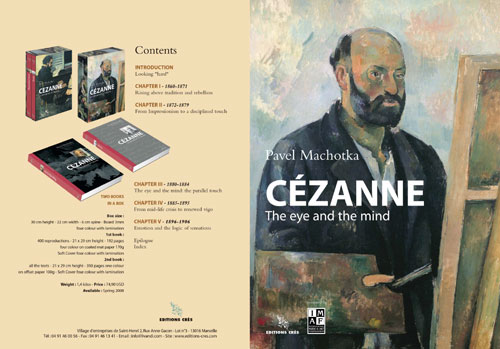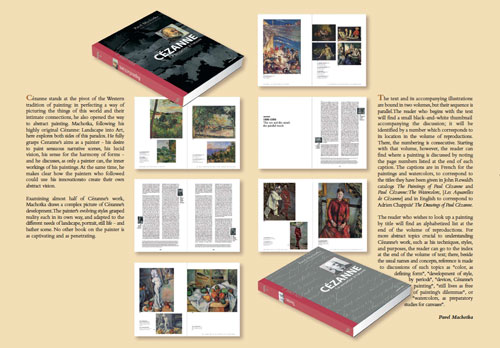

- Elegantly bound in two volumes with easy cross-references to text and images in each volume
- Volume of reproductions lavishly illustrated with 400 colorplates
- First book to reproduce nearly one-half of Cézanne's paintings in color
Machotka, himself an artist, looks at Cézanne's art with the same care and patience with which it had been produced, and encourages the reader's own "hard" looking. He says of Cézanne's paintings, "But above all, imagined on an easel without a frame, well before they have become objects of reverence on a museum wall, they invite us to study their touches as if we were following the painter at work, as he considers the effect of each touch on the rightness of the portrayal, and on the wholeness of the composition. We do need to be right -- we will never know if we were -- but simply following up the invitation is enough to force us to look at the paintings in a new way." (Preface, pg. 10).
Examining almost half of Cézanne's work, Machotka draws a complex picture of Cézanne's development.
The painter's evolving styles grapsed reality each in its own way, and adapted to the different needs of landscape, portrait, still life, and bather scenes. No other
book on the painter is as captivating and as penetrating.
Born in Prague,
Pavel Machotka emigrated to the United States as a young man, studied at the University of Chicago and Harvard University,
and pursued a distinguished career as professor of Psychology and Art at the University of California, Santa Cruz.
He is a painter specializing in the figure, landscape and still life, and exhibits regularly in Italy and the Czech Republic.
He lives with his wife, the writer Nina Hansen Machotka, in Umbria, Italy.